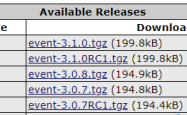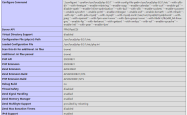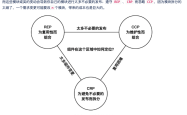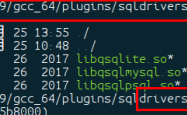深入分析PHP设计模式
1、单例模式
一个类,只能允许有一个对象存在
?| 1 2 3 4 5 6 7 8 9 10 11 12 13 | <?php class test{ protected function __construct(){ } public static function getInstance(){ $_test = new test(); return $_test ; } } $test = test::getInstance(); var_dump( $test ); ?> |
2、工厂模式
工厂模式,顾名思义,如同工厂一样,你把原材料放入工厂中,出来的是成品,而你并不需要知道工厂里做了什么,工厂模式主要用于解耦。
把对象的创建和使用的过程分开,比如: ClassA 调用 ClassB,那么 ClassA 只调用ClassB 的方法,
至于实例化 ClassB 则在工厂内实现。这样既减少了代码的重复使用,也方便对 ClassB 的后期维护。
如果 ClassB 实例化过程很复杂,使用简单工厂模式就会发现外部无需关注复杂的实例化,只管调用 ClassB 的方法即可,减少错误
| 1 2 3 4 5 6 7 8 9 10 11 12 13 14 15 16 17 18 19 20 21 22 23 | interface mysql{ public function connect(); } class mysqli2 implements mysql{ public function connect(){ echo 'mysqli' ; } } class pdo2 implements mysql{ public function connect(){ echo 'pdo' ; } } class mysqlFactory{ static public function factory( $class_name ){ return new $class_name (); } } $obj = mysqlFactory::factory( 'pdo2' ); $obj ->connect(); |
3、注册模式
注册模式,解决全局共享和交换对象。已经创建好的对象,挂在到某个全局可以使用的数组上,
在需要使用的时候,直接从该数组上获取即可。将对象注册到全局的树上。任何地方直接去访问。
?| 1 2 3 4 5 6 7 8 9 10 11 12 13 14 15 16 17 18 19 20 | <?php class Register { protected static $objects ; function set( $alias , $object ) //将对象注册到全局的树上 { self:: $objects [ $alias ]= $object ; //将对象放到树上 } static function get( $name ){ return self:: $objects [ $name ]; //获取某个注册到树上的对象 } function _unset( $alias ) { unset(self:: $objects [ $alias ]); //移除某个注册到树上的对象。 } } \Auto\Register::set( 'single' , $single ); $single = \Auto\Register::get( 'single' ); var_dump( $single ); |
4、适配器模式
将一个类的接口转换成客户希望的另外一个接口。
?| 1 2 3 4 5 6 7 8 9 10 11 12 13 14 15 16 17 18 19 20 21 22 23 24 25 26 27 28 29 30 31 32 33 34 35 36 37 38 39 40 41 42 43 44 45 46 47 48 49 50 51 52 53 54 55 56 57 58 59 60 61 62 | //目标角色 interface Aims { public function newMethod1(); public function newMethod2(); } //需要被适配的类(Adaptee) Class Man { public function oldMethod1() { echo 'man' ; } public function oldMethod2() { echo '男人' ; } } //需要被适配的类(Adaptee) Class Woman { public function oldMethod1() { echo 'woman' ; } public function oldMethod2() { echo '女人' ; } } //适配器, Class Adapters implements Aims { private $adaptee ; public function __construct( $adaptee ) { $this ->adaptee = $adaptee ; } public function newMethod1() { //以少量的代码对被适配者作出适配 echo 'sex :' ; $this ->adaptee->oldMethod1(); } public function newMethod2() { echo 'sex name :' ; $this ->adaptee->oldMethod2(); } } $adapter1 = new Adapters( new Man); $adapter1 ->newMethod1(); $adapter2 = new Adapters( new Woman); $adapter2 ->newMethod2(); |
5、策略模式
这是一个男人和女人的问题,将一组特定的行为和算法封装成类,以适应某些特定的上下文环境。
?| 1 2 3 4 5 6 7 8 9 10 11 12 13 14 15 16 17 18 19 20 21 22 23 24 25 26 27 28 29 30 31 32 33 34 35 36 37 38 39 40 41 42 43 44 45 46 47 48 49 50 51 52 53 54 55 56 57 58 59 60 61 62 | UserStrategy.php <?php /* * 声明策略文件的接口,约定策略包含的行为。 */ interface UserStrategy { function showAd(); function showCategory(); } FemaleUser.php <?php class FemaleUser implements UserStrategy { function showAd(){ echo "2016冬季女装" ; } function showCategory(){ echo "女装" ; } } MaleUser.php <?php class MaleUser implements UserStrategy { function showAd(){ echo "IPhone6s" ; } function showCategory(){ echo "电子产品" ; } } Page.php //执行文件 <?php require_once 'Loader.php' ; class Page { protected $strategy ; function index(){ echo "AD" ; $this ->strategy->showAd(); echo "<br>" ; echo "Category" ; $this ->strategy->showCategory(); echo "<br>" ; } function setStrategy(UserStrategy $strategy ){ $this ->strategy= $strategy ; } } $page = new Page(); if (isset( $_GET [ 'male' ])){ $strategy = new MaleUser(); } else { $strategy = new FemaleUser(); } $page ->setStrategy( $strategy ); $page ->index(); |
6、原型模式
不常用,大的对象类才使用,表现在clone
7、观察者模式
从面向过程的角度来看,首先是观察者向主题注册,注册完之后,主题再通知观察者做出相应的操作,整个事情就完了
?| 1 2 3 4 5 6 7 8 9 10 11 12 13 14 15 16 17 18 19 20 21 22 23 24 25 26 27 28 29 30 31 32 33 34 35 36 37 38 39 40 41 42 43 44 45 46 47 48 49 50 51 52 53 54 55 56 57 58 59 60 61 62 63 64 65 66 67 68 69 70 71 72 73 74 75 76 77 78 | /** * 事件产生类 * Class EventGenerator */ abstract class EventGenerator { private $ObServers = []; //增加观察者 public function add(ObServer $ObServer ) { $this ->ObServers[] = $ObServer ; } //事件通知 public function notify() { foreach ( $this ->ObServers as $ObServer ) { $ObServer ->update(); } } } /** * 观察者接口类 * Interface ObServer */ interface ObServer { public function update( $event_info = null); } /** * 观察者1 */ class ObServer1 implements ObServer { public function update( $event_info = null) { echo "观察者1 收到执行通知 执行完毕!\n" ; } } /** * 观察者1 */ class ObServer2 implements ObServer { public function update( $event_info = null) { echo "观察者2 收到执行通知 执行完毕!\n" ; } } /** * 事件 * Class Event */ class Event extends EventGenerator { /** * 触发事件 */ public function trigger() { //通知观察者 $this ->notify(); } } //创建一个事件 $event = new Event(); //为事件增加旁观者 $event ->add( new ObServer1()); $event ->add( new ObServer2()); //执行事件 通知旁观者 $event ->trigger(); |
以上就是深入分析PHP设计模式的详细内容,更多关于PHP设计模式的资料请关注服务器之家其它相关文章!
原文链接:https://www.cnblogs.com/yunbianyipianhai/p/13073598.html
1.本站遵循行业规范,任何转载的稿件都会明确标注作者和来源;2.本站的原创文章,请转载时务必注明文章作者和来源,不尊重原创的行为我们将追究责任;3.作者投稿可能会经我们编辑修改或补充。










